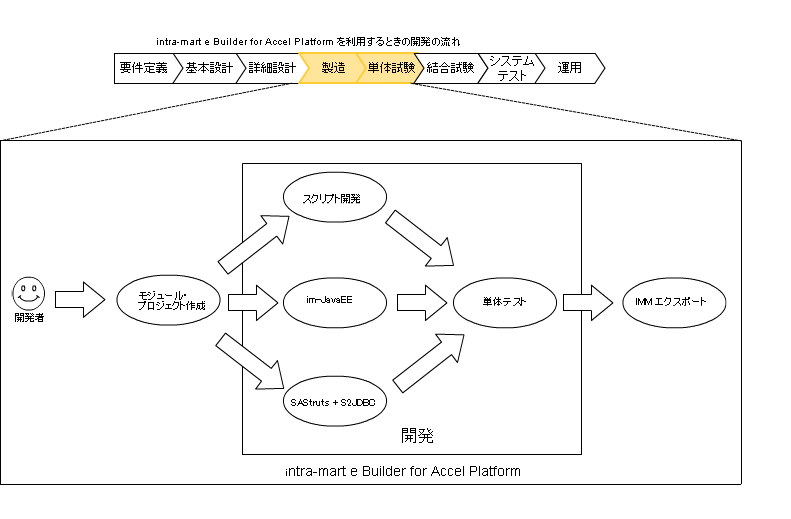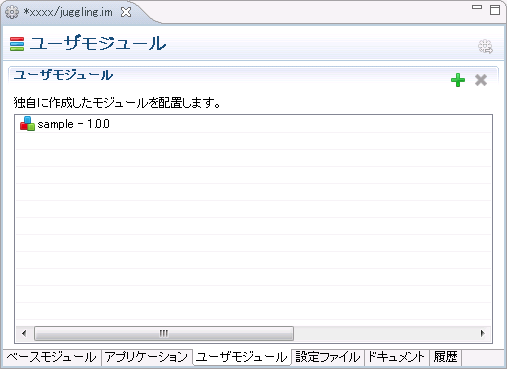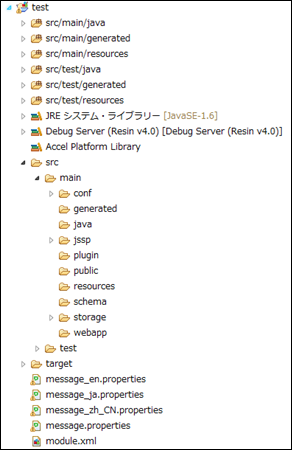Development Flow in e Builder¶
Summary ==
- This section describes the development flow of application using e Builder.
Development Flow¶
e Builder provides functions that support phases from [Manufacturing] to [Unit Test] in application development.Specifically, it consists of functions to create [User Module] that can be incorporated to Accel Platform.Following show the flow of operations for developers to use e Builder.
- Create [Module Project] for creating the user module.
- Select each development model for the module project, and develop the program.
- After the completion of development, do IMM Export (imm file generation) as user module.
For the user module that was created, settings are made when war is created by im-Juggling in the integration test phase.
Open juggling.im in the Juggling project by im-juggling Editor.
Select [User Module] tab, click the [+] icon on the upper right, and select the imm file generated.
After setting the user module, set dependent modules for the user module on as required basis to prevent error message from being displayed.
Setting to include user module into war is completed by the steps shown above.Please refer to [Creation of intra-mart Accel Platform Configuration File] of [intra-mart Accel Platform Setup Guide]
for ways to finally create the war file.
Module Project Configuration¶
Configuration of module project created by e Builder will be as follows:The figure below is the one which shows module project after creation displayed by package explorer.Developer will place application resources that they have created at the locations below, and develop module project.Module project assumes the use of partitioning as follows for each usage.
Partitioning Description main It places the main code and resource for the module. test It places the code and resource for doing the test. In the module project, there are directories available for placing the code and resource for each partitioning.For each directory program code and resource will be placed according to the table below.
Directory Usage Assumed Target Example generated It stores the Java files which were automatically created. *.java java It stores Java files. *.java resource It stores files other than Java files, which are used in the program. *.properties、*.xml conf It stores the setting file that controls the operations of module. *.properties、*.xml jssp It stores source for script development. *.html、*.js plugin It stores the setting file used as a plugin. *.properties、*.xml public It stores the Web contents that are static. *.html、*.css、*.swf 等 schema It stores XML schema files about the setting file. *.xsd storage/public It stores files managed by PublicStorage of Storage. All files stored in *.* storage. storage/system It stores files managed by SystemStorage of Storage. All files stored in *.* storage. webapp It stores the Web contents that are dynamic. *.jsp, Files placed at WEB-INF/. Column


